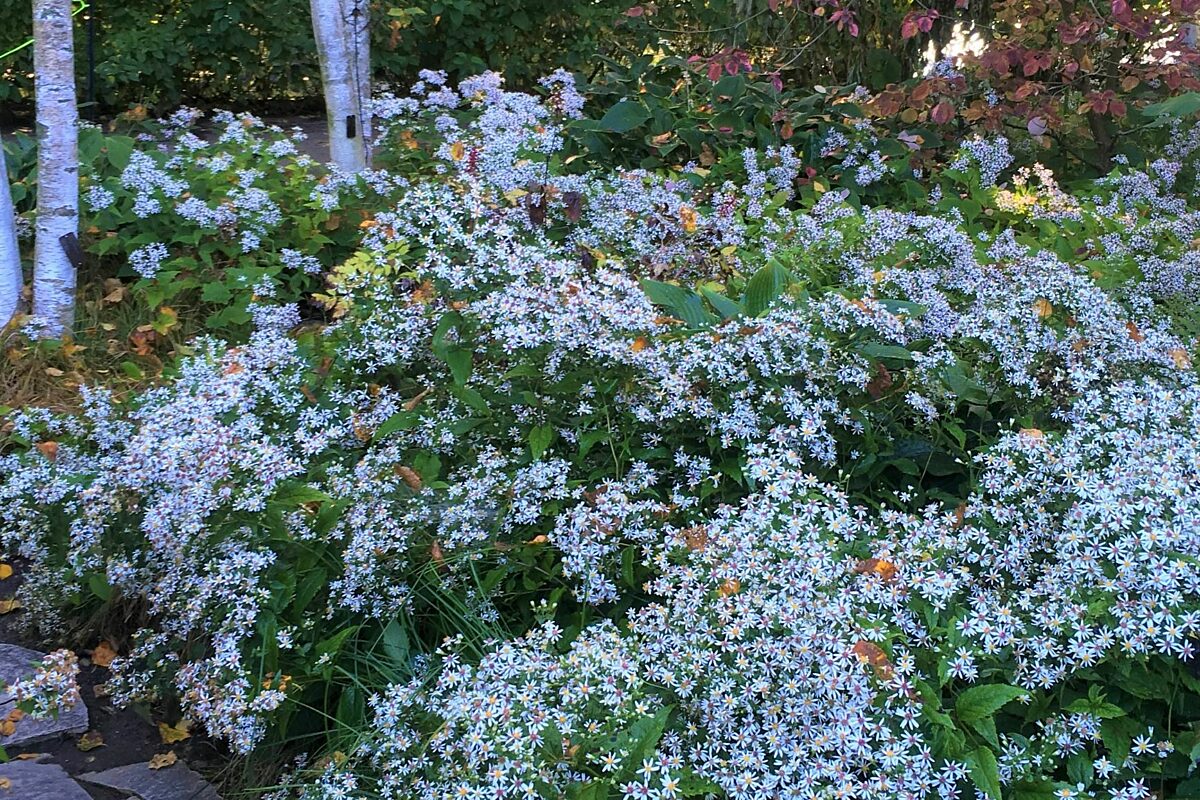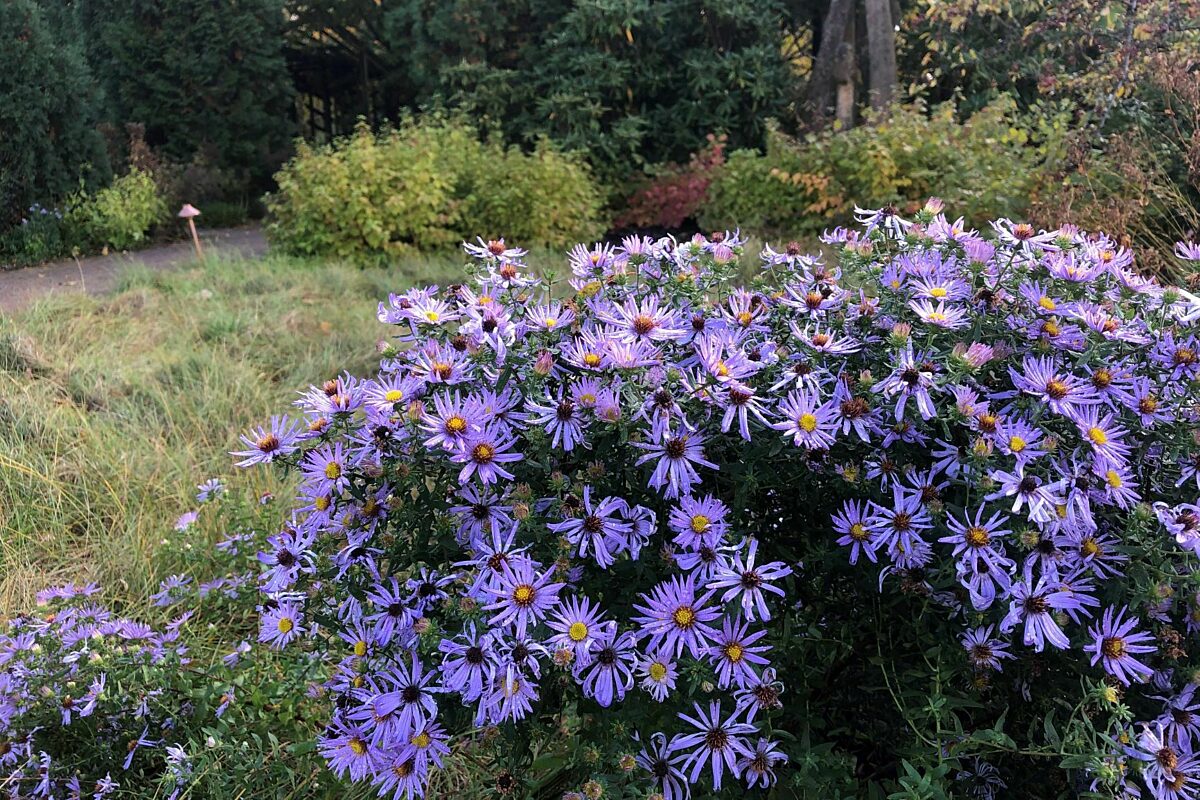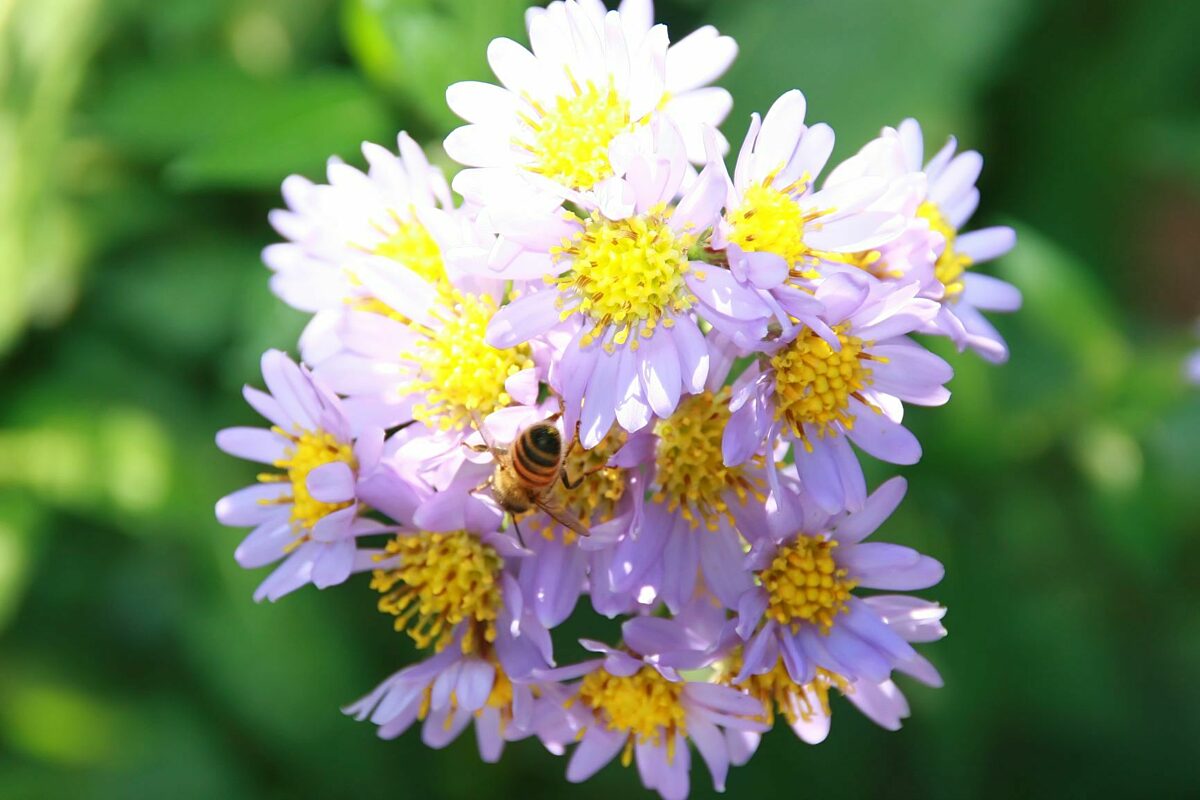Outdoor Gardens,
Lobby + Gift Shop
April - September
10 am – 6 pm daily
October - March
10 am – 4 pm daily
Bolz Conservatory
Closed March 11 - June 14 for Planned Maintenance
Schumacher Library
Permanently Closed
This season wound down with minimal fall color and early snowfalls, but not before the brilliant crescendo of blossoms from a great group of late season bloomers: the asters. For botanical accuracy at the Gardens, we call them by their current scientific names. A few I’d like to highlight are listed below - I hope you consider adding them to your list as you make garden plans for next season!

White wood aster is a lovely, native aster for a shady, woodland garden. The small white flowers bloom profusely from late summer to early fall. White wood aster can be found growing abundantly throughout the Birch Walk.

Aromatic aster is a low-growing, native species suitable for dry sites in full sun. The plant has a bushy habit overall and can be covered with purple flowerheads for a couple of months in the fall. The aromatic nature of the foliage has proven to be a beneficial attribute at the Gardens, as the aroma makes the foliage (almost) unpalatable to rabbits.

Aster tataricus ‘Jindai’ (tatarian aster)
One of the true Aster species! ‘Jindai’ tatarian aster is a tall and rigidly upright plant for full sun. It features light purple ray flowers (the “petals”) and bright yellow centers, blooming late in the fall. It was still flowering and looking good after frost and snows in November. This aster cultivar is named after the Jin-Dai Botanical Garden in Tokyo, Japan, where it was discovered.
Asters attract countless pollinators, work well in many different garden situations, and can be an integral part of a successional planting scheme. With thoughtful selections, you can have asters in bloom from August to November, providing insect sustenance and horticultural beauty wherever they grow.